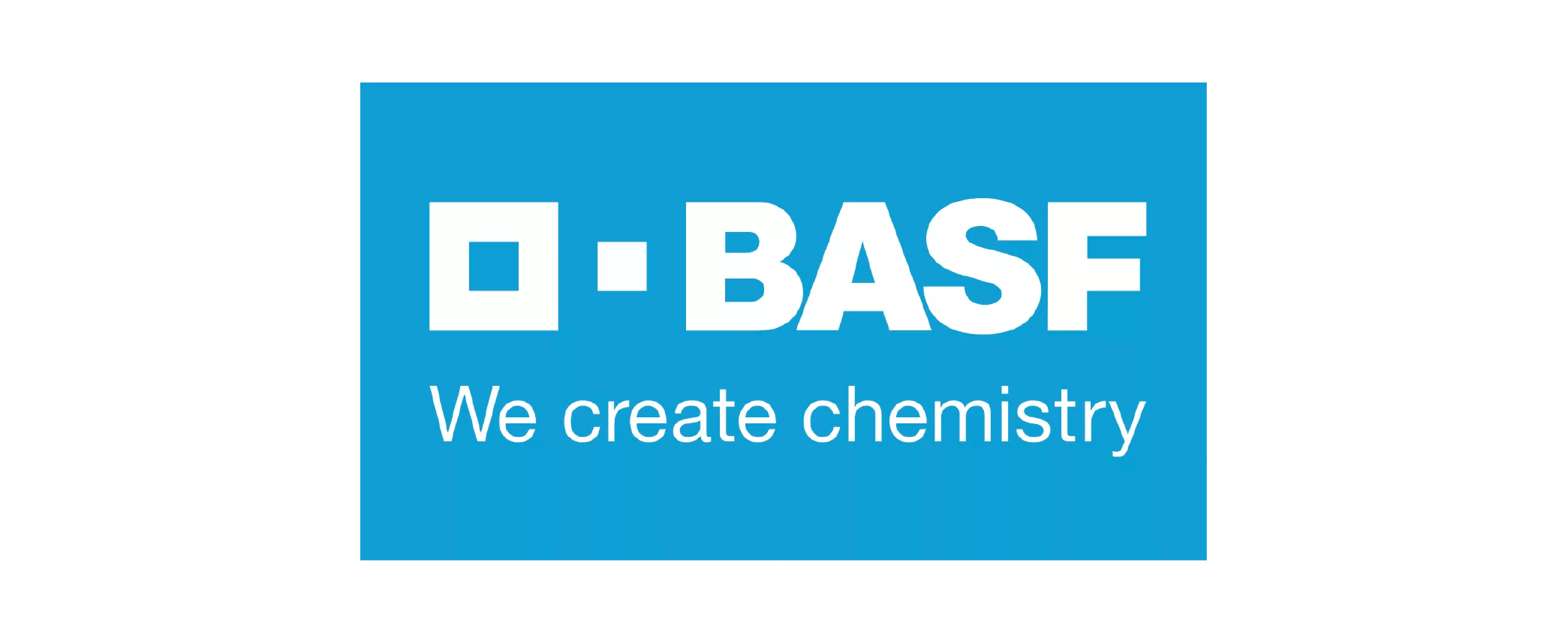The global Automotive Telematics Market size was valued at USD 85 Billion in 2024 and is projected to expand at a compound annual growth rate (CAGR) of 16% during the forecast period, reaching a value of USD 300 Billion by 2032.
The "Automotive Telematics Market Research Report" by Future Data Stats provides an in-depth examination of the market landscape, utilizing historical data from 2021 to 2023 to identify key trends and growth patterns. Setting 2024 as the foundational year, the report explores consumer behavior, competitive forces, and regulatory frameworks that influence the industry. It transcends basic analysis, delivering a thoroughly researched forecast extending from 2025 to 2033. By employing sophisticated data analysis methodologies, the report not only outlines the market's growth trajectory but also uncovers emerging opportunities and foresees potential obstacles, empowering stakeholders with vital insights to adeptly navigate the changing market landscape.
MARKET OVERVIEW:
The Automotive Telematics Market refers to the integration of telecommunication and monitoring systems in vehicles to enhance the driving experience, vehicle safety, and fleet management. It involves the use of embedded devices, smartphones, and connectivity systems that collect, transmit, and analyze data related to vehicle performance, location, and driver behavior. These systems support a range of applications such as navigation, safety alerts, remote diagnostics, and real-time traffic updates, improving both operational efficiency and user convenience. For market purposes, the automotive telematics sector encompasses the technology and services involved in creating connected vehicles and smart transportation systems. Companies in this market provide hardware, software, and services that enable vehicles to communicate with external networks, including cloud-based platforms and mobile devices. The goal of the automotive telematics market is to deliver integrated solutions that enhance vehicle functionality, reduce operational costs, and ensure safety, which, in turn, drives growth across various regions and industries.
MARKET DYNAMICS:
The latest trends in the Automotive Telematics Market revolve around the integration of advanced technologies like 5G connectivity, AI-driven analytics, and vehicle-to-everything (V2X) communication. With the rollout of 5G networks, telematics systems can deliver faster, more reliable data transfer, enabling real-time communication between vehicles, infrastructure, and other road users. Additionally, AI is playing a significant role in predictive maintenance, driver behavior analysis, and enhancing safety features, allowing vehicles to make data-driven decisions for improved performance. As connected and autonomous vehicle technology evolves, telematics solutions are becoming central to providing more efficient, safer, and user-friendly driving experiences. Looking ahead, the automotive telematics market is expected to see further growth driven by the increasing demand for electric vehicles (EVs) and the expansion of smart city infrastructure. EVs, with their need for efficient battery management and real-time performance monitoring, are likely to benefit from telematics systems that enable intelligent charging, route optimization, and energy consumption analysis. The rise of smart cities, equipped with advanced traffic management systems, will also push the adoption of telematics to optimize urban mobility, reduce congestion, and enhance public safety. This opens new business opportunities for telematics service providers to innovate and expand their offerings in both OEM and aftermarket segments, paving the way for sustainable and integrated automotive solutions.
Furthermore, the rise in consumer expectations for safety and convenience features, such as navigation and emergency response systems, fuels the adoption of telematics solutions. Additionally, government regulations promoting vehicle safety and emissions control encourage automakers to implement telematics technologies, making them an essential aspect of modern automotive design. However, the automotive telematics market also faces notable restraints. High implementation costs can deter smaller manufacturers from adopting these technologies, limiting market penetration. Moreover, concerns about data privacy and security pose significant challenges, as consumers remain wary of how their information is handled. Despite these obstacles, opportunities abound in this evolving landscape. The growing trend of electric and autonomous vehicles presents a unique chance for telematics providers to innovate and expand their offerings. As the industry moves toward more sustainable solutions, telematics will play a vital role in optimizing vehicle performance and enhancing user experiences.
AUTOMOTIVE TELEMATICS MARKET SEGMENTATION ANALYSIS
BY TYPE:
The automotive telematics market is predominantly divided into three types: embedded, tethered, and smartphone-based telematics. Embedded telematics systems are integrated directly into the vehicle’s architecture, offering seamless communication between the vehicle and external networks. These systems have become essential for OEMs aiming to provide vehicles with enhanced safety features, real-time diagnostics, and connected services. The growing trend toward embedded telematics is driven by their ability to improve user experience and provide long-term reliability, making them an attractive choice for high-end vehicles. As the automotive industry increasingly focuses on safety and security, embedded solutions are often incorporated into systems like collision avoidance, emergency response, and vehicle tracking, aligning with consumer demands for better protection. On the other hand, tethered telematics utilizes external devices, often connecting a smartphone to the vehicle’s infotainment system. This type is gaining traction due to its affordability and ease of installation, offering consumers the flexibility to leverage their mobile devices for connectivity. With advancements in mobile technology, tethered systems have become an essential component for infotainment applications, enabling functionalities such as music streaming, navigation, and hands-free calling. The tethered option presents a significant opportunity in the aftermarket sector, where consumers seek cost-effective solutions for integrating their vehicles with modern telematics services without the need for an embedded system.
Smartphone-based telematics represent a rapidly growing segment in the automotive industry. With the proliferation of smartphones equipped with advanced sensors, GPS, and wireless connectivity, many consumers are opting to use their mobile devices as the primary telematics hub for their vehicles. This type of telematics offers significant convenience, as it eliminates the need for additional hardware installations, instead leveraging apps that manage everything from vehicle health monitoring to driver behavior analysis. The increasing reliance on smartphone-based telematics is reshaping the market, making connected vehicle services more accessible and affordable for a wide range of vehicle owners, especially in the passenger vehicle segment. This flexibility in connectivity is expected to drive growth in emerging markets where consumers may not have the resources for more complex telematics systems.
BY APPLICATION:
The automotive telematics market is highly influenced by various applications that address safety, convenience, and operational efficiency. Among the most dominant is safety and security, where telematics play a crucial role in improving road safety and emergency response. Telematics systems integrated into vehicles can automatically detect collisions, alert emergency services, and even track the vehicle in real-time, ensuring faster recovery of stolen vehicles. The ongoing advancements in real-time data processing and analytics enhance the system’s ability to predict and prevent accidents, further solidifying telematics as an essential safety tool in the automotive sector. Vehicle tracking has emerged as another significant application of automotive telematics. This application is widely utilized in fleet management systems, where businesses need to monitor the movement, location, and condition of their vehicles at all times. Telematics-enabled vehicle tracking ensures efficient route optimization, reduces operational costs, and enhances fleet security. Companies in logistics, transportation, and delivery services benefit from real-time tracking capabilities, gaining the ability to monitor vehicle performance and driver behavior. The growing importance of logistics efficiency is likely to push the adoption of telematics systems in fleet management, particularly as businesses look for ways to reduce fuel consumption and improve delivery times.
Navigation and route optimization is an area where telematics technologies have shown significant advancements, improving drivers’ experiences by providing real-time traffic information, weather updates, and alternate routes. These applications not only enhance convenience for individual drivers but also provide fleet operators with data-driven insights to optimize delivery routes and reduce fuel costs. As consumers increasingly demand more efficient and user-friendly navigation systems, telematics-driven solutions are being integrated with advanced features like predictive analytics, real-time road conditions, and dynamic route adjustment, making them indispensable for both private and commercial vehicle applications. The integration of in-vehicle infotainment and remote diagnostics further enhances the value of telematics in improving the overall driving experience by enabling continuous vehicle monitoring, system updates, and entertainment, creating a seamless and enhanced driving environment.
BY CONNECTIVITY:
The connectivity type is a critical factor in the automotive telematics market, shaping how data is transmitted between vehicles and external networks. Cellular connectivity is one of the most widely used types, allowing vehicles to communicate with cloud-based platforms for real-time information exchange. This connectivity facilitates services like navigation, traffic updates, remote diagnostics, and over-the-air software updates, all of which contribute to the growing demand for smarter, connected vehicles. Cellular networks, including 4G and emerging 5G technologies, offer high-speed data transfer, essential for handling large volumes of data required by advanced telematics applications. As mobile networks continue to evolve, cellular connectivity will remain the backbone for telematics in modern vehicles. Satellite connectivity is another critical component, particularly for vehicles operating in remote areas where cellular networks may be unreliable. This connectivity type is essential for global tracking, navigation, and communication services, especially in applications like off-road vehicles, maritime vessels, and large-scale fleet operations that require seamless global coverage. With satellite communication, vehicles can stay connected even in areas with no cellular network, ensuring continuous monitoring and support. This connectivity is particularly significant for fleets operating across borders, providing the infrastructure needed for tracking and communication in underserved regions.
Wi-Fi connectivity is becoming increasingly common, particularly in passenger vehicles. This connectivity allows vehicles to connect to the internet when within range of a Wi-Fi network, facilitating high-speed data exchange without relying on cellular networks. Wi-Fi networks can support large data transfers, making them ideal for in-vehicle infotainment systems, video streaming, and content updates. Additionally, Wi-Fi can help manage fleet operations in urban environments, where cellular data can be overloaded or unreliable. Bluetooth connectivity also plays a significant role, enabling seamless integration between vehicles and personal devices. It facilitates hands-free calling, media streaming, and device synchronization, enhancing user convenience while driving. The widespread availability and cost-effectiveness of these wireless technologies continue to drive the adoption of telematics solutions across all vehicle types.
BY END USER:
In the automotive telematics market, the OEM (Original Equipment Manufacturer) segment remains a dominant force. OEMs are incorporating telematics systems directly into new vehicles, responding to consumer demand for integrated, connected features. As manufacturers increasingly prioritize smart vehicle technology, OEMs are working with telematics providers to offer seamless solutions that include navigation, safety, remote diagnostics, and infotainment systems. The push towards smart cars, electric vehicles, and autonomous driving technologies ensures that telematics remains a critical component in OEM product offerings. These integrated systems not only enhance the vehicle's functionality but also improve overall safety and fuel efficiency, making them highly attractive to consumers. The aftermarket segment is experiencing rapid growth, driven by the increasing adoption of telematics solutions in older vehicles. Consumers and businesses are retrofitting their vehicles with telematics devices for enhanced connectivity, fleet management, and driver safety. Aftermarket telematics systems offer flexibility in terms of installation, cost, and functionality, allowing vehicle owners to add specific features like GPS tracking, emergency services, and driver behavior monitoring. The growth of the aftermarket sector is driven by the increasing availability of affordable, plug-and-play telematics devices that can be easily installed in any vehicle, irrespective of its age or model. This trend has been particularly beneficial for fleet operators and individual consumers who seek to upgrade their vehicles with modern technology without purchasing new models.
With the rise of electric vehicles (EVs), telematics systems have become an integral part of the EV ecosystem. EV manufacturers are increasingly integrating telematics systems to monitor battery health, charging infrastructure, and overall vehicle performance. These systems provide drivers with real-time information on energy consumption, range optimization, and nearby charging stations. As the EV market continues to expand, telematics will play an essential role in maximizing the efficiency, safety, and user experience of electric vehicles. Furthermore, the integration of telematics in EVs supports their connectivity to various smart infrastructure systems, such as smart grids and public charging networks, ensuring the smooth functioning of the broader electric mobility ecosystem.
REGIONAL ANALYSIS:
North America dominates the automotive telematics market, driven by the strong presence of key automotive manufacturers and a rapidly expanding consumer base for connected vehicles. The region benefits from advanced infrastructure, a high adoption rate of electric and autonomous vehicles, and growing demand for safety features like collision avoidance and real-time vehicle tracking. Additionally, the presence of major tech companies that provide telematics solutions and services further supports market growth. Governments in North America also play a vital role by implementing regulations that promote vehicle safety and environmental standards, which fuels the need for advanced telematics systems.
Europe follows closely, with its automotive sector focusing heavily on innovation, sustainability, and advanced connectivity. The region has been at the forefront of adopting electric vehicles (EVs), making telematics integral for battery management, energy consumption tracking, and charging infrastructure. Europe also leads in regulatory efforts for automotive safety and emissions, pushing automakers to incorporate telematics for compliance and consumer safety. Meanwhile, the rise of connected infrastructure in smart cities further accelerates the demand for telematics systems. Asia Pacific exhibits significant growth potential, particularly due to the increasing demand for connected vehicles in countries like China and India. The region’s automotive market is expanding rapidly, supported by government initiatives aimed at modernizing transportation infrastructure and promoting green vehicle technology. Latin America, Middle East, and Africa are emerging markets for telematics, driven by improvements in mobile connectivity, growing vehicle fleets, and an increasing focus on fleet management solutions. These regions are poised to experience substantial growth as businesses and consumers embrace connected solutions for greater efficiency, safety, and cost savings.
MERGERS & ACQUISITIONS:
- In Jan 2024: Verizon Connect acquired Fleetonomy to enhance AI-driven fleet management solutions.
- In Feb 2024: Geotab partnered with LG Electronics to develop next-gen battery telematics.
- In Mar 2024: TomTom acquired DAVIS Instruments to strengthen weather data integration in telematics.
- In Apr 2024: Trimble Inc. merged with ALK Technologies to expand routing and navigation solutions.
- In May 2024: Bosch launched a new IoT-based telematics platform for commercial vehicles.
- In Jun 2024: Octo Telematics collaborated with Tesla to improve connected car data analytics.
- In Jul 2024: Continental AG acquired Cognata to enhance ADAS and telematics simulation.
- In Aug 2024: Mix Telematics partnered with Microsoft Azure for cloud-based fleet solutions.
- In Sep 2024: CalAmp rebranded as Peregrine after restructuring its telematics division.
- In Oct 2024: Webfleet Solutions (Bridgestone) acquired Nextraq to boost US market presence.
- In Nov 2024: Harman (Samsung) introduced a new AI-powered telematics control unit.
- In Dec 2024: ZF Friedrichshafen acquired Apex.AI to strengthen software-defined vehicle telematics.
KEY MARKET PLAYERS:
- Verizon Connect
- Geotab
- TomTom
- Trimble Inc.
- Bosch
- Octo Telematics
- Continental AG
- Mix Telematics
- CalAmp (Peregrine)
- Webfleet Solutions (Bridgestone)
- Harman (Samsung)
- ZF Friedrichshafen
- Teletrac Navman
- Samsara
- Lytx
- Omnitracs
- Microlise
- Transics (WABCO)
- Fleet Complete
- Azuga (Bridgestone)
Automotive Telematics Market:Table of Contents
Introduction
- Market Definition
- Market Dynamics
- Market Trends
Market Segmentation
- By Type
- By Application
- By Component
- By Connectivity
- By End User
- By Vehicle Type
Competitive Landscape
- Key Players
- Market Share Analysis
- Strategic Developments
Technological Developments
- Latest Innovations
- Future Outlook
Regional Analysis
- North America
- Europe
- Asia Pacific
- Latin America
- Middle East & Africa
Market Forecast
Conclusion
Automotive Telematics Market Segmentation
By Type:
- Embedded Telematics
- Tethered Telematics
- Smartphone-based Telematics
By Application:
- Safety & Security
- Vehicle Tracking
- Fleet Management
- Navigation & Route Optimization
- In-Vehicle Infotainment
- Remote Diagnostics
- Driver Assistance Systems
By Component:
- Hardware
- Software
- Services
By Connectivity:
- Cellular Connectivity
- Satellite Connectivity
- Wi-Fi Connectivity
- Bluetooth Connectivity
By End User:
- Original Equipment Manufacturers (OEMs)
- Aftermarket
By Vehicle Type:
- Passenger Vehicles
- Commercial Vehicles
- Electric Vehicles
By Geography:
- North America (USA, Canada, Mexico)
- Europe (UK, Germany, France, Italy, Spain, Rest of Europe)
- Asia-Pacific (China, Japan, Australia, South Korea, India, Rest of Asia-Pacific)
- South America (Brazil, Argentina, Rest of South America)
- Middle East and Africa (GCC Countries, South Africa, Rest of MEA)
Why Invest in a Market Research Report?
- Empower Informed Decision-Making
A meticulously crafted market research report delivers a comprehensive analysis of industry trends, consumer behavior, and competitive landscapes. By leveraging these insights, organizations can make data-driven decisions, minimizing uncertainties and risks when introducing innovations or expanding into new markets. - Uncover Untapped Opportunities
Market research illuminates market gaps, emerging trends, and unmet consumer needs. This intelligence enables businesses to align product development and service offerings with evolving demand, positioning them to capitalize on lucrative opportunities and drive market leadership. - Gain Competitive Intelligence
Through in-depth analysis of competitors’ strategies, strengths, and vulnerabilities, companies gain actionable insights for strategic differentiation. This knowledge empowers organizations to refine their value propositions and craft targeted strategies to outperform rivals. - Optimize Marketing Effectiveness
Granular insights into target demographics, purchasing patterns, and psychographics allow businesses to design data-driven marketing campaigns. Such precision enhances customer engagement, maximizes ROI, and ensures optimal allocation of marketing resources. - Proactive Risk Management
Robust market research identifies potential challenges, from economic fluctuations to regulatory hurdles, enabling proactive risk mitigation. By anticipating disruptions, businesses can safeguard profitability, operational continuity, and brand reputation. - Strengthen Stakeholder Confidence
Investors and stakeholders demand validated market data to assess viability. A well-structured report provides credible evidence of market potential, competitive advantages, and growth projections, bolstering trust and facilitating capital acquisition. - Stay Ahead of Industry Evolution
Continuous monitoring of technological advancements, regulatory shifts, and consumer preferences ensures agility in a dynamic marketplace. Market research equips organizations to adapt swiftly, innovate strategically, and sustain long-term competitiveness.
Research Methodology
At Future Data Stats, our research methodology is anchored in nearly 70 Years of combined industry expertise, refined to deliver precise market intelligence and actionable industry insights. We employ a systematic, multi-layered approach to ensure accuracy, reliability, and strategic relevance in our analyses. Below is a detailed overview of our methodology:
Methodological Framework
Our process integrates primary and secondary research, advanced analytical frameworks, and industry-specific expertise to generate comprehensive market evaluations. The methodology is structured to provide stakeholders with a granular understanding of market dynamics, competitive landscapes, and growth opportunities.
Comprehensive Market Insights
We deliver a 360-degree perspective on market size, structure, and emerging trends by synthesizing data from diverse sectors. Our analysis focuses on:
- Trend Identification: Real-time monitoring of industry developments and macroeconomic factors.
- Growth Drivers: Quantitative and qualitative assessment of factors influencing market trajectories.
- Forecasting: Scenario-based projections using validated data and expert evaluations.
All insights are grounded in high-quality datasets, independent expert perspectives, and rigorous validation protocols to ensure alignment with client objectives.
Data-Driven Research Approach
We leverage a multi-source data ecosystem to enhance analytical depth:
- Primary Research:
- Stakeholder Interviews: 24+ hours of structured engagements with industry leaders, suppliers, distributors, and end-users.
- Key Opinion Leader (KOL) Consultations: Customized questionnaires and in-depth discussions to capture nuanced insights.
- Value Chain Analysis: Holistic coverage from raw material suppliers to end-consumer dynamics.
- Secondary Research:
- Document Analysis: Evaluation of 3,000+ sources, including industry reports, regulatory publications, and competitive benchmarking data.
- Macro-Level Data: Integration of statistics from government databases, trade associations, and global indices.
Analytical Framework
Our dual-pronged analytical strategy ensures precision in market sizing and competitive positioning:
- Bottom-Up Approach:
- Calculation of regional and global market sizes through granular revenue analysis of key players.
- Validation via demand-supply gap assessments and pricing trend evaluations.
- Top-Down Approach:
- Identification of market leaders and segmentation based on product portfolios, regional presence, and innovation capabilities.
- Market share derivation using financial disclosures and industry benchmarks.
Key Methodological Advantages
- Actionable Intelligence: Robust datasets and trend analysis to inform strategic decision-making.
- Technological Rigor: Proprietary analytical tools and sector-specific models to enhance data accuracy.
- Unbiased Outcomes: Transparent, independent insights free from external influence.
Quality Assurance
Every research output undergoes a multi-stage validation process, including peer review, cross-verification with industry benchmarks, and real-time data updates. This ensures our findings remain current, credible, and actionable.
By combining empirical research, advanced analytics, and industry acumen, Future Data Stats empowers clients to navigate complex markets with confidence and achieve sustainable growth. Our methodology reflects a steadfast commitment to excellence, innovation, and client success.
Automotive Telematics Market Dynamic Factors
Drivers:
- Growing demand for connected vehicles and smart transportation solutions.
- Increasing consumer preference for enhanced safety features in vehicles.
- Rising need for efficient fleet management and vehicle tracking systems.
- Rapid advancements in wireless communication technologies.
- Strong government initiatives promoting vehicle safety and environmental standards.
Restraints:
- High installation and maintenance costs for telematics systems.
- Privacy concerns related to data collection and sharing.
- Lack of standardization in telematics systems across different regions.
- Limited infrastructure in certain regions for advanced telematics integration.
Opportunities:
- Expansion of electric and autonomous vehicle markets.
- Growth of IoT-based applications in vehicle management.
- Increasing adoption of telematics in the aftermarket sector.
- Potential for new partnerships between OEMs and tech companies.
- Rising demand for real-time vehicle diagnostics and predictive maintenance.
Challenges:
- Integration complexities with existing vehicle systems.
- Security threats and data breaches in telematics networks.
- Regulatory challenges and compliance with varying regional standards.
- Dependence on high-quality network infrastructure for consistent telematics performance.
Automotive Telematics Market Regional Key Trends Analysis
North America:
- Increasing adoption of advanced driver assistance systems (ADAS).
- Expansion of autonomous vehicle technology in telematics applications.
- Growing popularity of electric vehicles with integrated telematics.
Europe:
- Rise in regulatory mandates for vehicle safety and environmental performance.
- Strong push towards vehicle-to-vehicle (V2V) and vehicle-to-infrastructure (V2I) connectivity.
- Increasing demand for integrated infotainment systems in premium vehicles.
Asia Pacific:
- Surge in automotive manufacturing and telematics adoption in emerging economies.
- High demand for real-time navigation and route optimization.
- Growing focus on connected vehicle infrastructure development.
Latin America:
- Increasing interest in fleet management solutions for logistics and transportation.
- Rising awareness of telematics benefits for driver safety and fuel efficiency.
- Strong growth of automotive aftermarket services integrating telematics.
Middle East & Africa:
- Growth in telematics adoption for fleet management in logistics and transportation.
- Rising demand for telematics to support remote diagnostics in harsh environments.
- Increasing penetration of mobile-based telematics solutions in the region.
Frequently Asked Questions

















